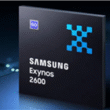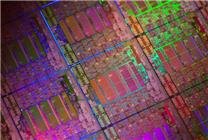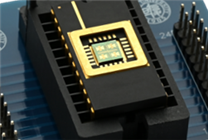TSMC’s 2nm Process: A Pivotal Development for Intel and AMD
Summary:
- TSMC’s 2nm process is set to revolutionize next-gen CPUs, significantly benefiting Intel and AMD.
- AMD will leverage this technology for its EPYC Venice CPUs, enhancing performance and energy efficiency.
- Intel’s Nova Lake CPUs will also utilize TSMC’s 2nm process amid challenges with its own production capabilities.
On October 1, Kuai Technology reported that TSMC’s 2nm N2 process is poised to become a crucial technology in the semiconductor industry. This advancement carries substantial implications for consumers of PC computers, specifically regarding major players like Intel and AMD.
AMD’s Strategic Partnership with TSMC
AMD has a long-standing and collaborative relationship with TSMC, which has now reached a new milestone. AMD’s CEO, Dr. Lisa Su, announced a few months ago that the company will employ TSMC’s groundbreaking 2nm process for its upcoming EPYC Venice data center CPUs. This innovative manufacturing technology promises enhanced performance alongside reduced power consumption, positioning AMD to maintain a competitive edge in the ever-evolving data center market.
Intel’s Embrace of Outsourced Manufacturing
In parallel, Intel is also planning to adopt TSMC’s 2nm process for its next generation of CPUs, notably the Nova Lake series. This decision arises from the fact that Intel’s proprietary 18A process has not yielded the anticipated results, compelling the company to explore external manufacturing options. Historically, Intel has emphasized customer satisfaction, stating its willingness to outsource chip manufacturing to meet market demands. The choice to utilize TSMC’s 2nm process for Nova Lake exemplifies this strategy.
Implications of the Nova Lake Series
Intel’s Panther Lake series CPUs are expected to be unveiled soon, with mass production slated for the first quarter of next year. This launch is crucial not only for showcasing Intel’s 18A process but also for shaping the future trajectory of its chip manufacturing strategy. The performance of the Panther Lake series will directly influence Intel’s operational direction and competitive stance within the industry.
The Competitive Landscape
The implementation of TSMC’s 2nm technology marks a significant turning point for both AMD and Intel. By enhancing chip performance and energy efficiency, this process is not only a technological advancement but also a vital aspect of maintaining competitiveness in the processor market.
Advantages of the 2nm Process
-
Higher Performance: TSMC’s 2nm technology ensures that AMD and Intel can produce CPUs that deliver superior computational power, catering to the increasing demands for high-performance computing.
-
Lower Power Consumption: The energy efficiency of the 2nm process helps mitigate operational costs for data centers, aligning with global sustainability goals.
- Strategic Resilience: For Intel, the shift to TSMC highlights the need for adaptability in a rapidly changing technology landscape, ensuring that they remain relevant amidst challenges.
Looking Ahead
As AMD and Intel prepare to launch their next-generation CPUs utilizing TSMC’s 2nm process, industry observers will closely monitor the implications for market competition, technological innovations, and consumer choices. The advancements associated with this new manufacturing process will likely set the stage for how computing performance evolves in the next few years, representing a significant leap forward in semiconductor technology.
Conclusion
In summary, TSMC’s 2nm process is a game-changer for both Intel and AMD, offering crucial enhancements in performance and efficiency. As these major players embark on this new chapter in CPU development, the technology sector stands at a pivotal moment that could redefine the landscape of computing.







